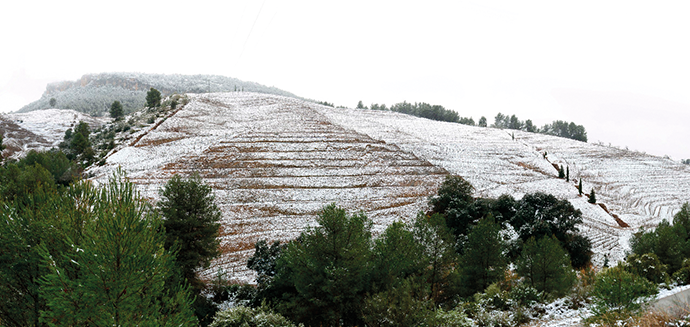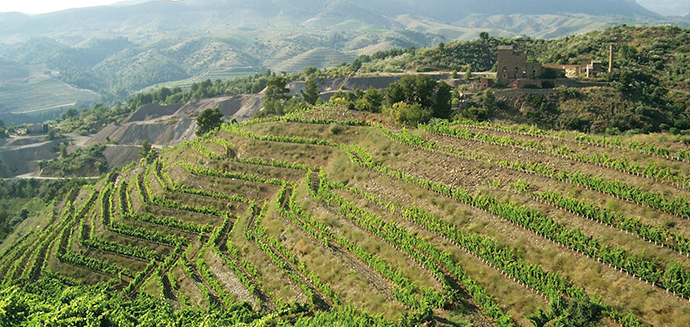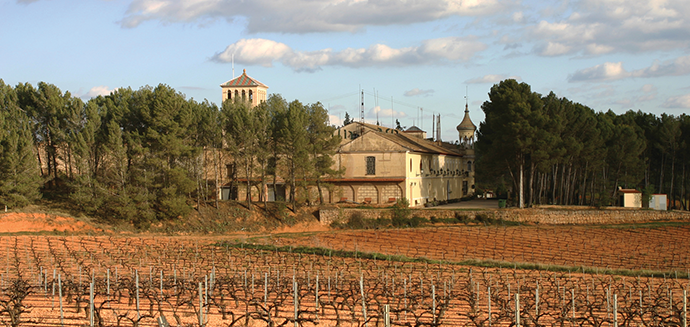Hello from Autumn. It’s been such a fabulous summer, we thought we’d continue to clutch wildly onto the feeling and go to Spain where, we’re told, it’s quite warm. The Spanish do a great job of channeling that wonderful European sensibility that says life is all about putting the right wine with the right food, and the right company, and just going for it. If you’ve not yet stepped aboard the Spanish bandwagon, there’s no time like the present; you’ll quickly see what you’ve been missing. No other country has turned its wine industry around in such dramatic fashion, via a combination of opportunity, technological advances and a fearless new generation of winemakers. Theirs are exotic, heady, muscular, succulent and sexy wines that have converted a generation as the world discovers the exciting new flavours and outstanding value of the offerings from one of the oldest vine cultures in Europe.

Almansa
In the central Iberian plateau, Almansa enjoys hot summers reaching temperatures up to 38 Celsius, down to -6 degrees in winter. This part of Spain is wide and expansive, a sea of flat plains with little rain and copious wind farms and solar panels. Grenache and Tempranillo love the heat and the long growing period found in these harsh conditions.
Bierzo + Rias Baixas
One of Spain’s oldest DOs, the rejuvenated Bierzo is home to intense, thrilling reds produced from the local Mencia grape, sourced from its steep vineyards and their old vines. Just along a bit, on Spain’s north-western coast, is Rías Baixis, where the favoured variety is the white Albariño grape and the warm sun and cooling sea breezes deliver wines that are crisp and fresh.

Castilla-la Mancha
In the high Southern Plateau south-east of Madrid is the DO of Castilla-La Mancha. It produces close to 50% of the country’s wines. The white wines are primarily produced from Airen and Macabeo, while fuller-bodied reds display spicy aromatics and ripe tannins via an assortment of Tempranillo, Bobal, Garnacha, Monastrell, Cabernet Sauvignon, Merlot and Syrah fruit.
Emporda
Located within the foothills of the Pyrenees north of Barcelona, Empordà is a relatively unknown wine region. The varietal mix includes Spain’s mainstay Garnacha (Grenache) along with international varietals Merlot, Syrah and Cabernet Sauvignon. The wines lack the high prices that would accompany a greater international rep, so there is some good value to be found.
Sierras De Malaga
The spectacular Serranía de Ronda region is near Andalusia’s southern coast in the province of Málaga. Steeped in history, winemaking traditions date back 3,000 years to Phoenician times. While the south is better known for its sherry, one can also find a selection of boutique wineries producing excellent red wines, often from the area’s indigenous varietals.

Penedes
On the coast just south of the French border, in Catalonia, the DO of Penedès is based around the wondrous architectural and culinary delight that is Barcelona, and it is here that you’ll find some of the best restaurants in the world. Penedès is responsible for Spain’s top cava wines, made via the traditional champagne method from indigenous grape varieties.
Priorat + Montsant
Montserrat is a serrated mountain range protecting Montsant and Priorat and providing them with a unique microclimate. Priorat’s dark, intense, Grenache-based wines have set the world alight, while Montsant is the broader DO that surrounds it. They make great value Catalonian wines there, offering a glimpse into the style of the other DO that lies at its heart.
Utiel-Requena
On Spain’s eastern coast, Utiel-Requena is historically linked to producing more bulk wine than quality. A few producers are starting to adjust this view. One leading the charge is Mas de Bazán, which is rapidly procuring a rep for its excellent reds. The variety of note is the indigenous Bobal grape, which some-how thrives in the extreme, dry conditions and poor soils.

Ribera Del Duero
Located on the banks of the Duero River around the village of Peñafiel, this is one of the oldest wine producing regions in the world. Low rainfall, 40-degree days and chilly nights are not uncommon, all of which concentrates the flavours in the grapes. Tempranillo (known here as Tinto Fino) dominates production.
Rioja
Where it all began for Spain. The Sierra de Cantabria range forms a critical backdrop along Rioja’s northern edge, protect-ing its vines from the chill Atlantic winds. The dominant red varieties are Garnacha and Tempranillo. There are three distinct sub-regions, all with their own unique attributes, but many of the wines are blends from all three.
Jerez
The region of Cádiz is Sherry Central. Within it lies Jerez which, with some Anglicising, became sherry. These wines are largely a product of the Palomino grape grown in bushes in the unique chalky white albariza soil that sizzles under the scorching sun. Power and depth occur as if by magic, as does the remarkable finesse that, combined, make them wondrous to drink.




